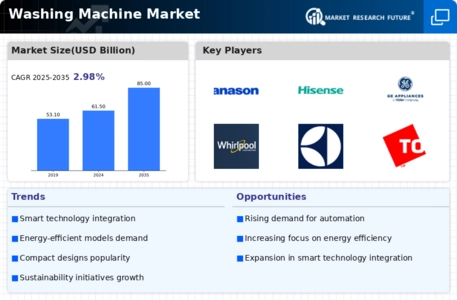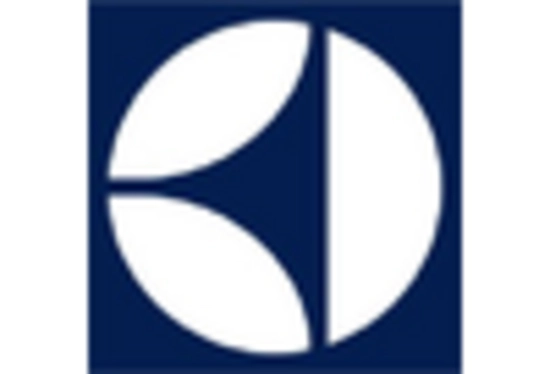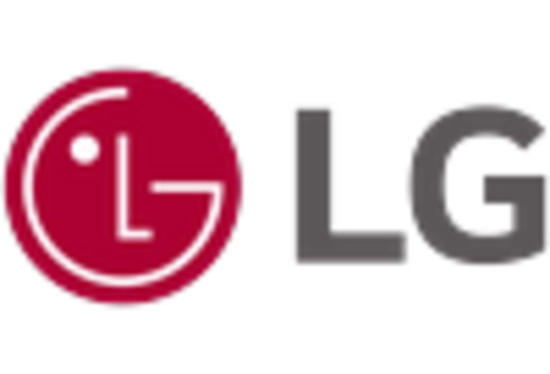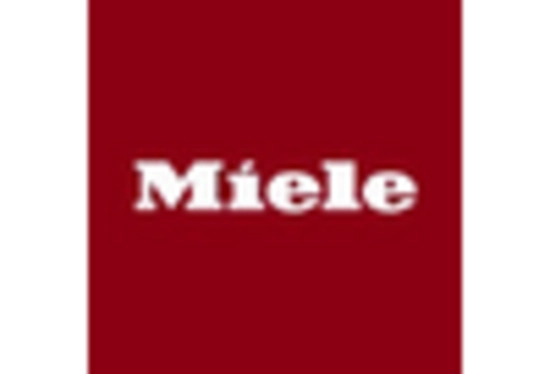-
EXECUTIVE SUMMARY
-
\r\n
-
Market Overview
-
\r\n
-
Key Findings
-
\r\n
-
Market Segmentation
-
\r\n
-
Competitive Landscape
-
\r\n
-
Challenges and Opportunities
-
\r\n
-
Future Outlook
-
\r\n
-
MARKET INTRODUCTION
-
\r\n
-
Definition
-
\r\n
-
Scope of the study
- Research Objective
- Assumption
- Limitations
-
\r\n
-
\r\n
-
\r\n
-
\r\n
-
RESEARCH METHODOLOGY
-
\r\n
-
Overview
-
\r\n
-
Data Mining
-
\r\n
-
Secondary Research
-
\r\n
-
Primary Research
- Primary Interviews and Information Gathering Process
- Breakdown of Primary Respondents
-
\r\n
-
\r\n
-
\r\n
-
Forecasting Model
-
\r\n
-
Market Size Estimation
- Bottom-Up Approach
- Top-Down Approach
-
\r\n
-
\r\n
-
\r\n
-
Data Triangulation
-
\r\n
-
Validation
-
\r\n
-
MARKET DYNAMICS
-
\r\n
-
Overview
-
\r\n
-
Drivers
-
\r\n
-
Restraints
-
\r\n
-
Opportunities
-
\r\n
-
MARKET FACTOR ANALYSIS
-
\r\n
-
Value chain Analysis
-
\r\n
-
Porter's Five Forces Analysis
- Bargaining Power of Suppliers
- Bargaining Power of Buyers
- Threat of New Entrants
- Threat of Substitutes
- Intensity of Rivalry
-
\r\n
-
\r\n
-
\r\n
-
\r\n
-
\r\n
-
\r\n
-
COVID-19 Impact Analysis
- Market Impact Analysis
- Regional Impact
- Opportunity and Threat Analysis
-
\r\n
-
\r\n
-
\r\n
-
\r\n
-
WASHING MACHINE MARKET, BY TYPE (USD BILLION)
-
\r\n
-
Front Load
-
\r\n
-
Top Load
-
\r\n
-
Washer Dryer Combo
-
\r\n
-
Compact
-
\r\n
-
WASHING MACHINE MARKET, BY TECHNOLOGY (USD BILLION)
-
\r\n
-
Fully Automatic
-
\r\n
-
Semi-Automatic
-
\r\n
-
Manual
-
\r\n
-
WASHING MACHINE MARKET, BY CAPACITY (USD BILLION)
-
\r\n
-
Below 6 Kg
-
\r\n
-
6-8 Kg
-
\r\n
-
Above 8 Kg
-
\r\n
-
WASHING MACHINE MARKET, BY END USE (USD BILLION)
-
\r\n
-
Residential
-
\r\n
-
Commercial
-
\r\n
-
WASHING MACHINE MARKET, BY REGIONAL (USD BILLION)
-
\r\n
-
North America
- US
- Canada
-
\r\n
-
\r\n
-
\r\n
-
Europe
- Germany
- UK
- France
- Russia
- Italy
- Spain
- Rest of Europe
-
\r\n
-
\r\n
-
\r\n
-
\r\n
-
\r\n
-
\r\n
-
\r\n
-
\r\n
-
APAC
- China
- India
- Japan
- South Korea
- Malaysia
- Thailand
- Indonesia
- Rest of APAC
-
\r\n
-
\r\n
-
\r\n
-
\r\n
-
\r\n
-
\r\n
-
\r\n
-
\r\n
-
\r\n
-
South America
- Brazil
- Mexico
- Argentina
- Rest of South America
-
\r\n
-
\r\n
-
\r\n
-
\r\n
-
\r\n
-
MEA
- GCC Countries
- South Africa
- Rest of MEA
-
\r\n
-
\r\n
-
\r\n
-
\r\n
-
COMPETITIVE LANDSCAPE
-
\r\n
-
Overview
-
\r\n
-
Competitive Analysis
-
\r\n
-
Market share Analysis
-
\r\n
-
Major Growth Strategy in the Washing Machine Market
-
\r\n
-
Competitive Benchmarking
-
\r\n
-
Leading Players in Terms of Number of Developments in the Washing Machine Market
-
\r\n
-
Key developments and growth strategies
- New Product Launch/Service Deployment
- Merger & Acquisitions
- Joint Ventures
-
\r\n
-
\r\n
-
\r\n
-
\r\n
-
Major Players Financial Matrix
- Sales and Operating Income
- Major Players R&D Expenditure. 2023
-
\r\n
-
\r\n
-
\r\n
-
COMPANY PROFILES
-
\r\n
-
Panasonic
- Financial Overview
- Products Offered
- Key Developments
- SWOT Analysis
- Key Strategies
-
\r\n
-
\r\n
-
\r\n
-
\r\n
-
\r\n
-
\r\n
-
Hisense
- Financial Overview
- Products Offered
- Key Developments
- SWOT Analysis
- Key Strategies
-
\r\n
-
\r\n
-
\r\n
-
\r\n
-
\r\n
-
\r\n
-
GE Appliances
- Financial Overview
- Products Offered
- Key Developments
- SWOT Analysis
- Key Strategies
-
\r\n
-
\r\n
-
\r\n
-
\r\n
-
\r\n
-
\r\n
-
Fisher and Paykel
- Financial Overview
- Products Offered
- Key Developments
- SWOT Analysis
- Key Strategies
-
\r\n
-
\r\n
-
\r\n
-
\r\n
-
\r\n
-
\r\n
-
Whirlpool
- Financial Overview
- Products Offered
- Key Developments
- SWOT Analysis
- Key Strategies
-
\r\n
-
\r\n
-
\r\n
-
\r\n
-
\r\n
-
\r\n
-
Electrolux
- Financial Overview
- Products Offered
- Key Developments
- SWOT Analysis
- Key Strategies
-
\r\n
-
\r\n
-
\r\n
-
\r\n
-
\r\n
-
\r\n
-
Toshiba
- Financial Overview
- Products Offered
- Key Developments
- SWOT Analysis
- Key Strategies
-
\r\n
-
\r\n
-
\r\n
-
\r\n
-
\r\n
-
\r\n
-
Haier
- Financial Overview
- Products Offered
- Key Developments
- SWOT Analysis
- Key Strategies
-
\r\n
-
\r\n
-
\r\n
-
\r\n
-
\r\n
-
\r\n
-
Arcelik
- Financial Overview
- Products Offered
- Key Developments
- SWOT Analysis
- Key Strategies
-
\r\n
-
\r\n
-
\r\n
-
\r\n
-
\r\n
-
\r\n
-
Samsung Electronics
- Financial Overview
- Products Offered
- Key Developments
- SWOT Analysis
- Key Strategies
-
\r\n
-
\r\n
-
\r\n
-
\r\n
-
\r\n
-
\r\n
-
Siemens
- Financial Overview
- Products Offered
- Key Developments
- SWOT Analysis
- Key Strategies
-
\r\n
-
\r\n
-
\r\n
-
\r\n
-
\r\n
-
\r\n
-
Sharp
- Financial Overview
- Products Offered
- Key Developments
- SWOT Analysis
- Key Strategies
-
\r\n
-
\r\n
-
\r\n
-
\r\n
-
\r\n
-
\r\n
-
Miele
- Financial Overview
- Products Offered
- Key Developments
- SWOT Analysis
- Key Strategies
-
\r\n
-
\r\n
-
\r\n
-
\r\n
-
\r\n
-
\r\n
-
Bosch
- Financial Overview
- Products Offered
- Key Developments
- SWOT Analysis
- Key Strategies
-
\r\n
-
\r\n
-
\r\n
-
\r\n
-
\r\n
-
\r\n
-
LG Electronics
- Financial Overview
- Products Offered
- Key Developments
- SWOT Analysis
- Key Strategies
-
\r\n
-
\r\n
-
\r\n
-
\r\n
-
\r\n
-
\r\n
-
APPENDIX
-
\r\n
-
References
-
\r\n
-
Related Reports
-
\r\n
-
LIST OF TABLES
-
\r\n
-
LIST OF ASSUMPTIONS
-
\r\n
-
NORTH AMERICA WASHING MACHINE MARKET SIZE ESTIMATES & FORECAST, BY TYPE, 2019-2035 (USD BILLIONS)
-
\r\n
-
NORTH AMERICA WASHING MACHINE MARKET SIZE ESTIMATES & FORECAST, BY TECHNOLOGY, 2019-2035 (USD BILLIONS)
-
\r\n
-
NORTH AMERICA WASHING MACHINE MARKET SIZE ESTIMATES & FORECAST, BY CAPACITY, 2019-2035 (USD BILLIONS)
-
\r\n
-
NORTH AMERICA WASHING MACHINE MARKET SIZE ESTIMATES & FORECAST, BY END USE, 2019-2035 (USD BILLIONS)
-
\r\n
-
NORTH AMERICA WASHING MACHINE MARKET SIZE ESTIMATES & FORECAST, BY REGIONAL, 2019-2035 (USD BILLIONS)
-
\r\n
-
US WASHING MACHINE MARKET SIZE ESTIMATES & FORECAST, BY TYPE, 2019-2035 (USD BILLIONS)
-
\r\n
-
US WASHING MACHINE MARKET SIZE ESTIMATES & FORECAST, BY TECHNOLOGY, 2019-2035 (USD BILLIONS)
-
\r\n
-
US WASHING MACHINE MARKET SIZE ESTIMATES & FORECAST, BY CAPACITY, 2019-2035 (USD BILLIONS)
-
\r\n
-
US WASHING MACHINE MARKET SIZE ESTIMATES & FORECAST, BY END USE, 2019-2035 (USD BILLIONS)
-
\r\n
-
US WASHING MACHINE MARKET SIZE ESTIMATES & FORECAST, BY REGIONAL, 2019-2035 (USD BILLIONS)
-
\r\n
-
CANADA WASHING MACHINE MARKET SIZE ESTIMATES & FORECAST, BY TYPE, 2019-2035 (USD BILLIONS)
-
\r\n
-
CANADA WASHING MACHINE MARKET SIZE ESTIMATES & FORECAST, BY TECHNOLOGY, 2019-2035 (USD BILLIONS)
-
\r\n
-
CANADA WASHING MACHINE MARKET SIZE ESTIMATES & FORECAST, BY CAPACITY, 2019-2035 (USD BILLIONS)
-
\r\n
-
CANADA WASHING MACHINE MARKET SIZE ESTIMATES & FORECAST, BY END USE, 2019-2035 (USD BILLIONS)
-
\r\n
-
CANADA WASHING MACHINE MARKET SIZE ESTIMATES & FORECAST, BY REGIONAL, 2019-2035 (USD BILLIONS)
-
\r\n
-
EUROPE WASHING MACHINE MARKET SIZE ESTIMATES & FORECAST, BY TYPE, 2019-2035 (USD BILLIONS)
-
\r\n
-
EUROPE WASHING MACHINE MARKET SIZE ESTIMATES & FORECAST, BY TECHNOLOGY, 2019-2035 (USD BILLIONS)
-
\r\n
-
EUROPE WASHING MACHINE MARKET SIZE ESTIMATES & FORECAST, BY CAPACITY, 2019-2035 (USD BILLIONS)
-
\r\n
-
EUROPE WASHING MACHINE MARKET SIZE ESTIMATES & FORECAST, BY END USE, 2019-2035 (USD BILLIONS)
-
\r\n
-
EUROPE WASHING MACHINE MARKET SIZE ESTIMATES & FORECAST, BY REGIONAL, 2019-2035 (USD BILLIONS)
-
\r\n
-
GERMANY WASHING MACHINE MARKET SIZE ESTIMATES & FORECAST, BY TYPE, 2019-2035 (USD BILLIONS)
-
\r\n
-
GERMANY WASHING MACHINE MARKET SIZE ESTIMATES & FORECAST, BY TECHNOLOGY, 2019-2035 (USD BILLIONS)
-
\r\n
-
GERMANY WASHING MACHINE MARKET SIZE ESTIMATES & FORECAST, BY CAPACITY, 2019-2035 (USD BILLIONS)
-
\r\n
-
GERMANY WASHING MACHINE MARKET SIZE ESTIMATES & FORECAST, BY END USE, 2019-2035 (USD BILLIONS)
-
\r\n
-
GERMANY WASHING MACHINE MARKET SIZE ESTIMATES & FORECAST, BY REGIONAL, 2019-2035 (USD BILLIONS)
-
\r\n
-
UK WASHING MACHINE MARKET SIZE ESTIMATES & FORECAST, BY TYPE, 2019-2035 (USD BILLIONS)
-
\r\n
-
UK WASHING MACHINE MARKET SIZE ESTIMATES & FORECAST, BY TECHNOLOGY, 2019-2035 (USD BILLIONS)
-
\r\n
-
UK WASHING MACHINE MARKET SIZE ESTIMATES & FORECAST, BY CAPACITY, 2019-2035 (USD BILLIONS)
-
\r\n
-
UK WASHING MACHINE MARKET SIZE ESTIMATES & FORECAST, BY END USE, 2019-2035 (USD BILLIONS)
-
\r\n
-
UK WASHING MACHINE MARKET SIZE ESTIMATES & FORECAST, BY REGIONAL, 2019-2035 (USD BILLIONS)
-
\r\n
-
FRANCE WASHING MACHINE MARKET SIZE ESTIMATES & FORECAST, BY TYPE, 2019-2035 (USD BILLIONS)
-
\r\n
-
FRANCE WASHING MACHINE MARKET SIZE ESTIMATES & FORECAST, BY TECHNOLOGY, 2019-2035 (USD BILLIONS)
-
\r\n
-
FRANCE WASHING MACHINE MARKET SIZE ESTIMATES & FORECAST, BY CAPACITY, 2019-2035 (USD BILLIONS)
-
\r\n
-
FRANCE WASHING MACHINE MARKET SIZE ESTIMATES & FORECAST, BY END USE, 2019-2035 (USD BILLIONS)
-
\r\n
-
FRANCE WASHING MACHINE MARKET SIZE ESTIMATES & FORECAST, BY REGIONAL, 2019-2035 (USD BILLIONS)
-
\r\n
-
RUSSIA WASHING MACHINE MARKET SIZE ESTIMATES & FORECAST, BY TYPE, 2019-2035 (USD BILLIONS)
-
\r\n
-
RUSSIA WASHING MACHINE MARKET SIZE ESTIMATES & FORECAST, BY TECHNOLOGY, 2019-2035 (USD BILLIONS)
-
\r\n
-
RUSSIA WASHING MACHINE MARKET SIZE ESTIMATES & FORECAST, BY CAPACITY, 2019-2035 (USD BILLIONS)
-
\r\n
-
RUSSIA WASHING MACHINE MARKET SIZE ESTIMATES & FORECAST, BY END USE, 2019-2035 (USD BILLIONS)
-
\r\n
-
RUSSIA WASHING MACHINE MARKET SIZE ESTIMATES & FORECAST, BY REGIONAL, 2019-2035 (USD BILLIONS)
-
\r\n
-
ITALY WASHING MACHINE MARKET SIZE ESTIMATES & FORECAST, BY TYPE, 2019-2035 (USD BILLIONS)
-
\r\n
-
ITALY WASHING MACHINE MARKET SIZE ESTIMATES & FORECAST, BY TECHNOLOGY, 2019-2035 (USD BILLIONS)
-
\r\n
-
ITALY WASHING MACHINE MARKET SIZE ESTIMATES & FORECAST, BY CAPACITY, 2019-2035 (USD BILLIONS)
-
\r\n
-
ITALY WASHING MACHINE MARKET SIZE ESTIMATES & FORECAST, BY END USE, 2019-2035 (USD BILLIONS)
-
\r\n
-
ITALY WASHING MACHINE MARKET SIZE ESTIMATES & FORECAST, BY REGIONAL, 2019-2035 (USD BILLIONS)
-
\r\n
-
SPAIN WASHING MACHINE MARKET SIZE ESTIMATES & FORECAST, BY TYPE, 2019-2035 (USD BILLIONS)
-
\r\n
-
SPAIN WASHING MACHINE MARKET SIZE ESTIMATES & FORECAST, BY TECHNOLOGY, 2019-2035 (USD BILLIONS)
-
\r\n
-
SPAIN WASHING MACHINE MARKET SIZE ESTIMATES & FORECAST, BY CAPACITY, 2019-2035 (USD BILLIONS)
-
\r\n
-
SPAIN WASHING MACHINE MARKET SIZE ESTIMATES & FORECAST, BY END USE, 2019-2035 (USD BILLIONS)
-
\r\n
-
SPAIN WASHING MACHINE MARKET SIZE ESTIMATES & FORECAST, BY REGIONAL, 2019-2035 (USD BILLIONS)
-
\r\n
-
REST OF EUROPE WASHING MACHINE MARKET SIZE ESTIMATES & FORECAST, BY TYPE, 2019-2035 (USD BILLIONS)
-
\r\n
-
REST OF EUROPE WASHING MACHINE MARKET SIZE ESTIMATES & FORECAST, BY TECHNOLOGY, 2019-2035 (USD BILLIONS)
-
\r\n
-
REST OF EUROPE WASHING MACHINE MARKET SIZE ESTIMATES & FORECAST, BY CAPACITY, 2019-2035 (USD BILLIONS)
-
\r\n
-
REST OF EUROPE WASHING MACHINE MARKET SIZE ESTIMATES & FORECAST, BY END USE, 2019-2035 (USD BILLIONS)
-
\r\n
-
REST OF EUROPE WASHING MACHINE MARKET SIZE ESTIMATES & FORECAST, BY REGIONAL, 2019-2035 (USD BILLIONS)
-
\r\n
-
APAC WASHING MACHINE MARKET SIZE ESTIMATES & FORECAST, BY TYPE, 2019-2035 (USD BILLIONS)
-
\r\n
-
APAC WASHING MACHINE MARKET SIZE ESTIMATES & FORECAST, BY TECHNOLOGY, 2019-2035 (USD BILLIONS)
-
\r\n
-
APAC WASHING MACHINE MARKET SIZE ESTIMATES & FORECAST, BY CAPACITY, 2019-2035 (USD BILLIONS)
-
\r\n
-
APAC WASHING MACHINE MARKET SIZE ESTIMATES & FORECAST, BY END USE, 2019-2035 (USD BILLIONS)
-
\r\n
-
APAC WASHING MACHINE MARKET SIZE ESTIMATES & FORECAST, BY REGIONAL, 2019-2035 (USD BILLIONS)
-
\r\n
-
CHINA WASHING MACHINE MARKET SIZE ESTIMATES & FORECAST, BY TYPE, 2019-2035 (USD BILLIONS)
-
\r\n
-
CHINA WASHING MACHINE MARKET SIZE ESTIMATES & FORECAST, BY TECHNOLOGY, 2019-2035 (USD BILLIONS)
-
\r\n
-
CHINA WASHING MACHINE MARKET SIZE ESTIMATES & FORECAST, BY CAPACITY, 2019-2035 (USD BILLIONS)
-
\r\n
-
CHINA WASHING MACHINE MARKET SIZE ESTIMATES & FORECAST, BY END USE, 2019-2035 (USD BILLIONS)
-
\r\n
-
CHINA WASHING MACHINE MARKET SIZE ESTIMATES & FORECAST, BY REGIONAL, 2019-2035 (USD BILLIONS)
-
\r\n
-
INDIA WASHING MACHINE MARKET SIZE ESTIMATES & FORECAST, BY TYPE, 2019-2035 (USD BILLIONS)
-
\r\n
-
INDIA WASHING MACHINE MARKET SIZE ESTIMATES & FORECAST, BY TECHNOLOGY, 2019-2035 (USD BILLIONS)
-
\r\n
-
INDIA WASHING MACHINE MARKET SIZE ESTIMATES & FORECAST, BY CAPACITY, 2019-2035 (USD BILLIONS)
-
\r\n
-
INDIA WASHING MACHINE MARKET SIZE ESTIMATES & FORECAST, BY END USE, 2019-2035 (USD BILLIONS)
-
\r\n
-
INDIA WASHING MACHINE MARKET SIZE ESTIMATES & FORECAST, BY REGIONAL, 2019-2035 (USD BILLIONS)
-
\r\n
-
JAPAN WASHING MACHINE MARKET SIZE ESTIMATES & FORECAST, BY TYPE, 2019-2035 (USD BILLIONS)
-
\r\n
-
JAPAN WASHING MACHINE MARKET SIZE ESTIMATES & FORECAST, BY TECHNOLOGY, 2019-2035 (USD BILLIONS)
-
\r\n
-
JAPAN WASHING MACHINE MARKET SIZE ESTIMATES & FORECAST, BY CAPACITY, 2019-2035 (USD BILLIONS)
-
\r\n
-
JAPAN WASHING MACHINE MARKET SIZE ESTIMATES & FORECAST, BY END USE, 2019-2035 (USD BILLIONS)
-
\r\n
-
JAPAN WASHING MACHINE MARKET SIZE ESTIMATES & FORECAST, BY REGIONAL, 2019-2035 (USD BILLIONS)
-
\r\n
-
SOUTH KOREA WASHING MACHINE MARKET SIZE ESTIMATES & FORECAST, BY TYPE, 2019-2035 (USD BILLIONS)
-
\r\n
-
SOUTH KOREA WASHING MACHINE MARKET SIZE ESTIMATES & FORECAST, BY TECHNOLOGY, 2019-2035 (USD BILLIONS)
-
\r\n
-
SOUTH KOREA WASHING MACHINE MARKET SIZE ESTIMATES & FORECAST, BY CAPACITY, 2019-2035 (USD BILLIONS)
-
\r\n
-
SOUTH KOREA WASHING MACHINE MARKET SIZE ESTIMATES & FORECAST, BY END USE, 2019-2035 (USD BILLIONS)
-
\r\n
-
SOUTH KOREA WASHING MACHINE MARKET SIZE ESTIMATES & FORECAST, BY REGIONAL, 2019-2035 (USD BILLIONS)
-
\r\n
-
MALAYSIA WASHING MACHINE MARKET SIZE ESTIMATES & FORECAST, BY TYPE, 2019-2035 (USD BILLIONS)
-
\r\n
-
MALAYSIA WASHING MACHINE MARKET SIZE ESTIMATES & FORECAST, BY TECHNOLOGY, 2019-2035 (USD BILLIONS)
-
\r\n
-
MALAYSIA WASHING MACHINE MARKET SIZE ESTIMATES & FORECAST, BY CAPACITY, 2019-2035 (USD BILLIONS)
-
\r\n
-
MALAYSIA WASHING MACHINE MARKET SIZE ESTIMATES & FORECAST, BY END USE, 2019-2035 (USD BILLIONS)
-
\r\n
-
MALAYSIA WASHING MACHINE MARKET SIZE ESTIMATES & FORECAST, BY REGIONAL, 2019-2035 (USD BILLIONS)
-
\r\n
-
THAILAND WASHING MACHINE MARKET SIZE ESTIMATES & FORECAST, BY TYPE, 2019-2035 (USD BILLIONS)
-
\r\n
-
THAILAND WASHING MACHINE MARKET SIZE ESTIMATES & FORECAST, BY TECHNOLOGY, 2019-2035 (USD BILLIONS)
-
\r\n
-
THAILAND WASHING MACHINE MARKET SIZE ESTIMATES & FORECAST, BY CAPACITY, 2019-2035 (USD BILLIONS)
-
\r\n
-
THAILAND WASHING MACHINE MARKET SIZE ESTIMATES & FORECAST, BY END USE, 2019-2035 (USD BILLIONS)
-
\r\n
-
THAILAND WASHING MACHINE MARKET SIZE ESTIMATES & FORECAST, BY REGIONAL, 2019-2035 (USD BILLIONS)
-
\r\n
-
INDONESIA WASHING MACHINE MARKET SIZE ESTIMATES & FORECAST, BY TYPE, 2019-2035 (USD BILLIONS)
-
\r\n
-
INDONESIA WASHING MACHINE MARKET SIZE ESTIMATES & FORECAST, BY TECHNOLOGY, 2019-2035 (USD BILLIONS)
-
\r\n
-
INDONESIA WASHING MACHINE MARKET SIZE ESTIMATES & FORECAST, BY CAPACITY, 2019-2035 (USD BILLIONS)
-
\r\n
-
INDONESIA WASHING MACHINE MARKET SIZE ESTIMATES & FORECAST, BY END USE, 2019-2035 (USD BILLIONS)
-
\r\n
-
INDONESIA WASHING MACHINE MARKET SIZE ESTIMATES & FORECAST, BY REGIONAL, 2019-2035 (USD BILLIONS)
-
\r\n
-
REST OF APAC WASHING MACHINE MARKET SIZE ESTIMATES & FORECAST, BY TYPE, 2019-2035 (USD BILLIONS)
-
\r\n
-
REST OF APAC WASHING MACHINE MARKET SIZE ESTIMATES & FORECAST, BY TECHNOLOGY, 2019-2035 (USD BILLIONS)
-
\r\n
-
REST OF APAC WASHING MACHINE MARKET SIZE ESTIMATES & FORECAST, BY CAPACITY, 2019-2035 (USD BILLIONS)
-
\r\n
-
REST OF APAC WASHING MACHINE MARKET SIZE ESTIMATES & FORECAST, BY END USE, 2019-2035 (USD BILLIONS)
-
\r\n
-
REST OF APAC WASHING MACHINE MARKET SIZE ESTIMATES & FORECAST, BY REGIONAL, 2019-2035 (USD BILLIONS)
-
\r\n
-
SOUTH AMERICA WASHING MACHINE MARKET SIZE ESTIMATES & FORECAST, BY TYPE, 2019-2035 (USD BILLIONS)
-
\r\n
-
SOUTH AMERICA WASHING MACHINE MARKET SIZE ESTIMATES & FORECAST, BY TECHNOLOGY, 2019-2035 (USD BILLIONS)
-
\r\n
-
SOUTH AMERICA WASHING MACHINE MARKET SIZE ESTIMATES & FORECAST, BY CAPACITY, 2019-2035 (USD BILLIONS)
-
\r\n
-
SOUTH AMERICA WASHING MACHINE MARKET SIZE ESTIMATES & FORECAST, BY END USE, 2019-2035 (USD BILLIONS)
-
\r\n
-
SOUTH AMERICA WASHING MACHINE MARKET SIZE ESTIMATES & FORECAST, BY REGIONAL, 2019-2035 (USD BILLIONS)
-
\r\n
-
BRAZIL WASHING MACHINE MARKET SIZE ESTIMATES & FORECAST, BY TYPE, 2019-2035 (USD BILLIONS)
-
\r\n
-
BRAZIL WASHING MACHINE MARKET SIZE ESTIMATES & FORECAST, BY TECHNOLOGY, 2019-2035 (USD BILLIONS)
-
\r\n
-
BRAZIL WASHING MACHINE MARKET SIZE ESTIMATES & FORECAST, BY CAPACITY, 2019-2035 (USD BILLIONS)
-
\r\n
-
BRAZIL WASHING MACHINE MARKET SIZE ESTIMATES & FORECAST, BY END USE, 2019-2035 (USD BILLIONS)
-
\r\n
-
BRAZIL WASHING MACHINE MARKET SIZE ESTIMATES & FORECAST, BY REGIONAL, 2019-2035 (USD BILLIONS)
-
\r\n
-
MEXICO WASHING MACHINE MARKET SIZE ESTIMATES & FORECAST, BY TYPE, 2019-2035 (USD BILLIONS)
-
\r\n
-
MEXICO WASHING MACHINE MARKET SIZE ESTIMATES & FORECAST, BY TECHNOLOGY, 2019-2035 (USD BILLIONS)
-
\r\n
-
MEXICO WASHING MACHINE MARKET SIZE ESTIMATES & FORECAST, BY CAPACITY, 2019-2035 (USD BILLIONS)
-
\r\n
-
MEXICO WASHING MACHINE MARKET SIZE ESTIMATES & FORECAST, BY END USE, 2019-2035 (USD BILLIONS)
-
\r\n
-
MEXICO WASHING MACHINE MARKET SIZE ESTIMATES & FORECAST, BY REGIONAL, 2019-2035 (USD BILLIONS)
-
\r\n
-
ARGENTINA WASHING MACHINE MARKET SIZE ESTIMATES & FORECAST, BY TYPE, 2019-2035 (USD BILLIONS)
-
\r\n
-
ARGENTINA WASHING MACHINE MARKET SIZE ESTIMATES & FORECAST, BY TECHNOLOGY, 2019-2035 (USD BILLIONS)
-
\r\n
-
ARGENTINA WASHING MACHINE MARKET SIZE ESTIMATES & FORECAST, BY CAPACITY, 2019-2035 (USD BILLIONS)
-
\r\n
-
ARGENTINA WASHING MACHINE MARKET SIZE ESTIMATES & FORECAST, BY END USE, 2019-2035 (USD BILLIONS)
-
\r\n
-
ARGENTINA WASHING MACHINE MARKET SIZE ESTIMATES & FORECAST, BY REGIONAL, 2019-2035 (USD BILLIONS)
-
\r\n
-
REST OF SOUTH AMERICA WASHING MACHINE MARKET SIZE ESTIMATES & FORECAST, BY TYPE, 2019-2035 (USD BILLIONS)
-
\r\n
-
REST OF SOUTH AMERICA WASHING MACHINE MARKET SIZE ESTIMATES & FORECAST, BY TECHNOLOGY, 2019-2035 (USD BILLIONS)
-
\r\n
-
REST OF SOUTH AMERICA WASHING MACHINE MARKET SIZE ESTIMATES & FORECAST, BY CAPACITY, 2019-2035 (USD BILLIONS)
-
\r\n
-
REST OF SOUTH AMERICA WASHING MACHINE MARKET SIZE ESTIMATES & FORECAST, BY END USE, 2019-2035 (USD BILLIONS)
-
\r\n
-
REST OF SOUTH AMERICA WASHING MACHINE MARKET SIZE ESTIMATES & FORECAST, BY REGIONAL, 2019-2035 (USD BILLIONS)
-
\r\n
-
MEA WASHING MACHINE MARKET SIZE ESTIMATES & FORECAST, BY TYPE, 2019-2035 (USD BILLIONS)
-
\r\n
-
MEA WASHING MACHINE MARKET SIZE ESTIMATES & FORECAST, BY TECHNOLOGY, 2019-2035 (USD BILLIONS)
-
\r\n
-
MEA WASHING MACHINE MARKET SIZE ESTIMATES & FORECAST, BY CAPACITY, 2019-2035 (USD BILLIONS)
-
\r\n
-
MEA WASHING MACHINE MARKET SIZE ESTIMATES & FORECAST, BY END USE, 2019-2035 (USD BILLIONS)
-
\r\n
-
MEA WASHING MACHINE MARKET SIZE ESTIMATES & FORECAST, BY REGIONAL, 2019-2035 (USD BILLIONS)
-
\r\n
-
GCC COUNTRIES WASHING MACHINE MARKET SIZE ESTIMATES & FORECAST, BY TYPE, 2019-2035 (USD BILLIONS)
-
\r\n
-
GCC COUNTRIES WASHING MACHINE MARKET SIZE ESTIMATES & FORECAST, BY TECHNOLOGY, 2019-2035 (USD BILLIONS)
-
\r\n
-
GCC COUNTRIES WASHING MACHINE MARKET SIZE ESTIMATES & FORECAST, BY CAPACITY, 2019-2035 (USD BILLIONS)
-
\r\n
-
GCC COUNTRIES WASHING MACHINE MARKET SIZE ESTIMATES & FORECAST, BY END USE, 2019-2035 (USD BILLIONS)
-
\r\n
-
GCC COUNTRIES WASHING MACHINE MARKET SIZE ESTIMATES & FORECAST, BY REGIONAL, 2019-2035 (USD BILLIONS)
-
\r\n
-
SOUTH AFRICA WASHING MACHINE MARKET SIZE ESTIMATES & FORECAST, BY TYPE, 2019-2035 (USD BILLIONS)
-
\r\n
-
SOUTH AFRICA WASHING MACHINE MARKET SIZE ESTIMATES & FORECAST, BY TECHNOLOGY, 2019-2035 (USD BILLIONS)
-
\r\n
-
SOUTH AFRICA WASHING MACHINE MARKET SIZE ESTIMATES & FORECAST, BY CAPACITY, 2019-2035 (USD BILLIONS)
-
\r\n
-
SOUTH AFRICA WASHING MACHINE MARKET SIZE ESTIMATES & FORECAST, BY END USE, 2019-2035 (USD BILLIONS)
-
\r\n
-
SOUTH AFRICA WASHING MACHINE MARKET SIZE ESTIMATES & FORECAST, BY REGIONAL, 2019-2035 (USD BILLIONS)
-
\r\n
-
REST OF MEA WASHING MACHINE MARKET SIZE ESTIMATES & FORECAST, BY TYPE, 2019-2035 (USD BILLIONS)
-
\r\n
-
REST OF MEA WASHING MACHINE MARKET SIZE ESTIMATES & FORECAST, BY TECHNOLOGY, 2019-2035 (USD BILLIONS)
-
\r\n
-
REST OF MEA WASHING MACHINE MARKET SIZE ESTIMATES & FORECAST, BY CAPACITY, 2019-2035 (USD BILLIONS)
-
\r\n
-
REST OF MEA WASHING MACHINE MARKET SIZE ESTIMATES & FORECAST, BY END USE, 2019-2035 (USD BILLIONS)
-
\r\n
-
REST OF MEA WASHING MACHINE MARKET SIZE ESTIMATES & FORECAST, BY REGIONAL, 2019-2035 (USD BILLIONS)
-
\r\n
-
PRODUCT LAUNCH/PRODUCT DEVELOPMENT/APPROVAL
-
\r\n
-
ACQUISITION/PARTNERSHIP
-
\r\n
-
LIST OF FIGURES
-
\r\n
-
MARKET SYNOPSIS
-
\r\n
-
NORTH AMERICA WASHING MACHINE MARKET ANALYSIS
-
\r\n
-
US WASHING MACHINE MARKET ANALYSIS BY TYPE
-
\r\n
-
US WASHING MACHINE MARKET ANALYSIS BY TECHNOLOGY
-
\r\n
-
US WASHING MACHINE MARKET ANALYSIS BY CAPACITY
-
\r\n
-
US WASHING MACHINE MARKET ANALYSIS BY END USE
-
\r\n
-
US WASHING MACHINE MARKET ANALYSIS BY REGIONAL
-
\r\n
-
CANADA WASHING MACHINE MARKET ANALYSIS BY TYPE
-
\r\n
-
CANADA WASHING MACHINE MARKET ANALYSIS BY TECHNOLOGY
-
\r\n
-
CANADA WASHING MACHINE MARKET ANALYSIS BY CAPACITY
-
\r\n
-
CANADA WASHING MACHINE MARKET ANALYSIS BY END USE
-
\r\n
-
CANADA WASHING MACHINE MARKET ANALYSIS BY REGIONAL
-
\r\n
-
EUROPE WASHING MACHINE MARKET ANALYSIS
-
\r\n
-
GERMANY WASHING MACHINE MARKET ANALYSIS BY TYPE
-
\r\n
-
GERMANY WASHING MACHINE MARKET ANALYSIS BY TECHNOLOGY
-
\r\n
-
GERMANY WASHING MACHINE MARKET ANALYSIS BY CAPACITY
-
\r\n
-
GERMANY WASHING MACHINE MARKET ANALYSIS BY END USE
-
\r\n
-
GERMANY WASHING MACHINE MARKET ANALYSIS BY REGIONAL
-
\r\n
-
UK WASHING MACHINE MARKET ANALYSIS BY TYPE
-
\r\n
-
UK WASHING MACHINE MARKET ANALYSIS BY TECHNOLOGY
-
\r\n
-
UK WASHING MACHINE MARKET ANALYSIS BY CAPACITY
-
\r\n
-
UK WASHING MACHINE MARKET ANALYSIS BY END USE
-
\r\n
-
UK WASHING MACHINE MARKET ANALYSIS BY REGIONAL
-
\r\n
-
FRANCE WASHING MACHINE MARKET ANALYSIS BY TYPE
-
\r\n
-
FRANCE WASHING MACHINE MARKET ANALYSIS BY TECHNOLOGY
-
\r\n
-
FRANCE WASHING MACHINE MARKET ANALYSIS BY CAPACITY
-
\r\n
-
FRANCE WASHING MACHINE MARKET ANALYSIS BY END USE
-
\r\n
-
FRANCE WASHING MACHINE MARKET ANALYSIS BY REGIONAL
-
\r\n
-
RUSSIA WASHING MACHINE MARKET ANALYSIS BY TYPE
-
\r\n
-
RUSSIA WASHING MACHINE MARKET ANALYSIS BY TECHNOLOGY
-
\r\n
-
RUSSIA WASHING MACHINE MARKET ANALYSIS BY CAPACITY
-
\r\n
-
RUSSIA WASHING MACHINE MARKET ANALYSIS BY END USE
-
\r\n
-
RUSSIA WASHING MACHINE MARKET ANALYSIS BY REGIONAL
-
\r\n
-
ITALY WASHING MACHINE MARKET ANALYSIS BY TYPE
-
\r\n
-
ITALY WASHING MACHINE MARKET ANALYSIS BY TECHNOLOGY
-
\r\n
-
ITALY WASHING MACHINE MARKET ANALYSIS BY CAPACITY
-
\r\n
-
ITALY WASHING MACHINE MARKET ANALYSIS BY END USE
-
\r\n
-
ITALY WASHING MACHINE MARKET ANALYSIS BY REGIONAL
-
\r\n
-
SPAIN WASHING MACHINE MARKET ANALYSIS BY TYPE
-
\r\n
-
SPAIN WASHING MACHINE MARKET ANALYSIS BY TECHNOLOGY
-
\r\n
-
SPAIN WASHING MACHINE MARKET ANALYSIS BY CAPACITY
-
\r\n
-
SPAIN WASHING MACHINE MARKET ANALYSIS BY END USE
-
\r\n
-
SPAIN WASHING MACHINE MARKET ANALYSIS BY REGIONAL
-
\r\n
-
REST OF EUROPE WASHING MACHINE MARKET ANALYSIS BY TYPE
-
\r\n
-
REST OF EUROPE WASHING MACHINE MARKET ANALYSIS BY TECHNOLOGY
-
\r\n
-
REST OF EUROPE WASHING MACHINE MARKET ANALYSIS BY CAPACITY
-
\r\n
-
REST OF EUROPE WASHING MACHINE MARKET ANALYSIS BY END USE
-
\r\n
-
REST OF EUROPE WASHING MACHINE MARKET ANALYSIS BY REGIONAL
-
\r\n
-
APAC WASHING MACHINE MARKET ANALYSIS
-
\r\n
-
CHINA WASHING MACHINE MARKET ANALYSIS BY TYPE
-
\r\n
-
CHINA WASHING MACHINE MARKET ANALYSIS BY TECHNOLOGY
-
\r\n
-
CHINA WASHING MACHINE MARKET ANALYSIS BY CAPACITY
-
\r\n
-
CHINA WASHING MACHINE MARKET ANALYSIS BY END USE
-
\r\n
-
CHINA WASHING MACHINE MARKET ANALYSIS BY REGIONAL
-
\r\n
-
INDIA WASHING MACHINE MARKET ANALYSIS BY TYPE
-
\r\n
-
INDIA WASHING MACHINE MARKET ANALYSIS BY TECHNOLOGY
-
\r\n
-
INDIA WASHING MACHINE MARKET ANALYSIS BY CAPACITY
-
\r\n
-
INDIA WASHING MACHINE MARKET ANALYSIS BY END USE
-
\r\n
-
INDIA WASHING MACHINE MARKET ANALYSIS BY REGIONAL
-
\r\n
-
JAPAN WASHING MACHINE MARKET ANALYSIS BY TYPE
-
\r\n
-
JAPAN WASHING MACHINE MARKET ANALYSIS BY TECHNOLOGY
-
\r\n
-
JAPAN WASHING MACHINE MARKET ANALYSIS BY CAPACITY
-
\r\n
-
JAPAN WASHING MACHINE MARKET ANALYSIS BY END USE
-
\r\n
-
JAPAN WASHING MACHINE MARKET ANALYSIS BY REGIONAL
-
\r\n
-
SOUTH KOREA WASHING MACHINE MARKET ANALYSIS BY TYPE
-
\r\n
-
SOUTH KOREA WASHING MACHINE MARKET ANALYSIS BY TECHNOLOGY
-
\r\n
-
SOUTH KOREA WASHING MACHINE MARKET ANALYSIS BY CAPACITY
-
\r\n
-
SOUTH KOREA WASHING MACHINE MARKET ANALYSIS BY END USE
-
\r\n
-
SOUTH KOREA WASHING MACHINE MARKET ANALYSIS BY REGIONAL
-
\r\n
-
MALAYSIA WASHING MACHINE MARKET ANALYSIS BY TYPE
-
\r\n
-
MALAYSIA WASHING MACHINE MARKET ANALYSIS BY TECHNOLOGY
-
\r\n
-
MALAYSIA WASHING MACHINE MARKET ANALYSIS BY CAPACITY
-
\r\n
-
MALAYSIA WASHING MACHINE MARKET ANALYSIS BY END USE
-
\r\n
-
MALAYSIA WASHING MACHINE MARKET ANALYSIS BY REGIONAL
-
\r\n
-
THAILAND WASHING MACHINE MARKET ANALYSIS BY TYPE
-
\r\n
-
THAILAND WASHING MACHINE MARKET ANALYSIS BY TECHNOLOGY
-
\r\n
-
THAILAND WASHING MACHINE MARKET ANALYSIS BY CAPACITY
-
\r\n
-
THAILAND WASHING MACHINE MARKET ANALYSIS BY END USE
-
\r\n
-
THAILAND WASHING MACHINE MARKET ANALYSIS BY REGIONAL
-
\r\n
-
INDONESIA WASHING MACHINE MARKET ANALYSIS BY TYPE
-
\r\n
-
INDONESIA WASHING MACHINE MARKET ANALYSIS BY TECHNOLOGY
-
\r\n
-
INDONESIA WASHING MACHINE MARKET ANALYSIS BY CAPACITY
-
\r\n
-
INDONESIA WASHING MACHINE MARKET ANALYSIS BY END USE
-
\r\n
-
INDONESIA WASHING MACHINE MARKET ANALYSIS BY REGIONAL
-
\r\n
-
REST OF APAC WASHING MACHINE MARKET ANALYSIS BY TYPE
-
\r\n
-
REST OF APAC WASHING MACHINE MARKET ANALYSIS BY TECHNOLOGY
-
\r\n
-
REST OF APAC WASHING MACHINE MARKET ANALYSIS BY CAPACITY
-
\r\n
-
REST OF APAC WASHING MACHINE MARKET ANALYSIS BY END USE
-
\r\n
-
REST OF APAC WASHING MACHINE MARKET ANALYSIS BY REGIONAL
-
\r\n
-
SOUTH AMERICA WASHING MACHINE MARKET ANALYSIS
-
\r\n
-
BRAZIL WASHING MACHINE MARKET ANALYSIS BY TYPE
-
\r\n
-
BRAZIL WASHING MACHINE MARKET ANALYSIS BY TECHNOLOGY
-
\r\n
-
BRAZIL WASHING MACHINE MARKET ANALYSIS BY CAPACITY
-
\r\n
-
BRAZIL WASHING MACHINE MARKET ANALYSIS BY END USE
-
\r\n
-
BRAZIL WASHING MACHINE MARKET ANALYSIS BY REGIONAL
-
\r\n
-
MEXICO WASHING MACHINE MARKET ANALYSIS BY TYPE
-
\r\n
-
MEXICO WASHING MACHINE MARKET ANALYSIS BY TECHNOLOGY
-
\r\n
-
MEXICO WASHING MACHINE MARKET ANALYSIS BY CAPACITY
-
\r\n
-
MEXICO WASHING MACHINE MARKET ANALYSIS BY END USE
-
\r\n
-
MEXICO WASHING MACHINE MARKET ANALYSIS BY REGIONAL
-
\r\n
-
ARGENTINA WASHING MACHINE MARKET ANALYSIS BY TYPE
-
\r\n
-
ARGENTINA WASHING MACHINE MARKET ANALYSIS BY TECHNOLOGY
-
\r\n
-
ARGENTINA WASHING MACHINE MARKET ANALYSIS BY CAPACITY
-
\r\n
-
ARGENTINA WASHING MACHINE MARKET ANALYSIS BY END USE
-
\r\n
-
ARGENTINA WASHING MACHINE MARKET ANALYSIS BY REGIONAL
-
\r\n
-
REST OF SOUTH AMERICA WASHING MACHINE MARKET ANALYSIS BY TYPE
-
\r\n
-
REST OF SOUTH AMERICA WASHING MACHINE MARKET ANALYSIS BY TECHNOLOGY
-
\r\n
-
REST OF SOUTH AMERICA WASHING MACHINE MARKET ANALYSIS BY CAPACITY
-
\r\n
-
REST OF SOUTH AMERICA WASHING MACHINE MARKET ANALYSIS BY END USE
-
\r\n
-
REST OF SOUTH AMERICA WASHING MACHINE MARKET ANALYSIS BY REGIONAL
-
\r\n
-
MEA WASHING MACHINE MARKET ANALYSIS
-
\r\n
-
GCC COUNTRIES WASHING MACHINE MARKET ANALYSIS BY TYPE
-
\r\n
-
GCC COUNTRIES WASHING MACHINE MARKET ANALYSIS BY TECHNOLOGY
-
\r\n
-
GCC COUNTRIES WASHING MACHINE MARKET ANALYSIS BY CAPACITY
-
\r\n
-
GCC COUNTRIES WASHING MACHINE MARKET ANALYSIS BY END USE
-
\r\n
-
GCC COUNTRIES WASHING MACHINE MARKET ANALYSIS BY REGIONAL
-
\r\n
-
SOUTH AFRICA WASHING MACHINE MARKET ANALYSIS BY TYPE
-
\r\n
-
SOUTH AFRICA WASHING MACHINE MARKET ANALYSIS BY TECHNOLOGY
-
\r\n
-
SOUTH AFRICA WASHING MACHINE MARKET ANALYSIS BY CAPACITY
-
\r\n
-
SOUTH AFRICA WASHING MACHINE MARKET ANALYSIS BY END USE
-
\r\n
-
SOUTH AFRICA WASHING MACHINE MARKET ANALYSIS BY REGIONAL
-
\r\n
-
REST OF MEA WASHING MACHINE MARKET ANALYSIS BY TYPE
-
\r\n
-
REST OF MEA WASHING MACHINE MARKET ANALYSIS BY TECHNOLOGY
-
\r\n
-
REST OF MEA WASHING MACHINE MARKET ANALYSIS BY CAPACITY
-
\r\n
-
REST OF MEA WASHING MACHINE MARKET ANALYSIS BY END USE
-
\r\n
-
REST OF MEA WASHING MACHINE MARKET ANALYSIS BY REGIONAL
-
\r\n
-
KEY BUYING CRITERIA OF WASHING MACHINE MARKET
-
\r\n
-
RESEARCH PROCESS OF MRFR
-
\r\n
-
DRO ANALYSIS OF WASHING MACHINE MARKET
-
\r\n
-
DRIVERS IMPACT ANALYSIS: WASHING MACHINE MARKET
-
\r\n
-
RESTRAINTS IMPACT ANALYSIS: WASHING MACHINE MARKET
-
\r\n
-
SUPPLY / VALUE CHAIN: WASHING MACHINE MARKET
-
\r\n
-
WASHING MACHINE MARKET, BY TYPE, 2025 (% SHARE)
-
\r\n
-
WASHING MACHINE MARKET, BY TYPE, 2019 TO 2035 (USD Billions)
-
\r\n
-
WASHING MACHINE MARKET, BY TECHNOLOGY, 2025 (% SHARE)
-
\r\n
-
WASHING MACHINE MARKET, BY TECHNOLOGY, 2019 TO 2035 (USD Billions)
-
\r\n
-
WASHING MACHINE MARKET, BY CAPACITY, 2025 (% SHARE)
-
\r\n
-
WASHING MACHINE MARKET, BY CAPACITY, 2019 TO 2035 (USD Billions)
-
\r\n
-
WASHING MACHINE MARKET, BY END USE, 2025 (% SHARE)
-
\r\n
-
WASHING MACHINE MARKET, BY END USE, 2019 TO 2035 (USD Billions)
-
\r\n
-
WASHING MACHINE MARKET, BY REGIONAL, 2025 (% SHARE)
-
\r\n
-
WASHING MACHINE MARKET, BY REGIONAL, 2019 TO 2035 (USD Billions)
-
\r\n
-
BENCHMARKING OF MAJOR COMPETITORS









Leave a Comment